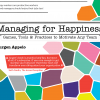Tools
Articles
|
|
5 Ways Agile Testing Is Different from Traditional Testing It’s the distinctions between agile and traditional software development approaches, as well as the adaptability of testers in these very different environments, that makes agile testing different from traditional testing. Agile demands more from its testers, and, in turn, it values them more, too. Let’s look at five main things that make an agile tester’s life different from that of a traditional tester. |
|
 |
Job Hunting for Software Testers: A Primer As straightforward as most software testing and QA job postings seem, they may not actually tell you much about the job itself or the company that’s posting. How can you tell whether you’d be a good fit? If you are interested, how can you best approach the application process? László Szegedi's analysis will help you ask the right questions and prepare yourself to nail the interview. |
|
 |
Heresy! Automation Does Not Require Test Cases Traditionally, automated scripts are derived from existing test cases. But if we divorce the notion of “automation” from the notions of “test cases” and “test scripts,” we can think of automation as a judicious use of technology to help humans do their jobs. This broadens our world to include different tools that can help testers increase coverage, test faster, and detect trends. |
|
 |
Your Load Test Model Is Broken: How to Understand and Correct the Data When conducting load testing, if all you do is run the same tests and then examine data such as average response time, you could be missing some red flags. Load test models usually aren't analogous to the real world, so you may have disappointed users you don't even know about. It's our responsibility to understand what our tools do as well as what the results mean. |
|
 |
Book Review: Managing for Happiness: Games, Tools, and Practices to Motivate Any Team Jurgen Appelo’s useful and fun-to-read book Managing for Happiness: Games, Tools, and Practices to Motivate Any Team gives you concrete tools to identify ways to help your team be happier and to create environments where people can thrive and be more productive. Despite the word managing being in the title, the book is a beneficial read for anyone. |
|
 |
Weighing the Costs and Benefits of Mobile Test Automation Today’s market is teeming with attractive options for automating your mobile testing—each with a price tag. You may perceive mobile automation solutions as too expensive, but before you dismiss test automation as a viable solution for your business, let’s break down the benefits, options, and costs of automating your mobile QA process. |
|
 |
Behavior-Driven Development and Automation: Establishing Order Though automation is often mentioned in the same breath as behavior-driven development, they are not equally important. If you want to use behavior-driven development, do just that: Work on getting the approach right, and forget about the automation at first. Here's why you should think of automation as more of a bonus to the BDD process. |
|
 |
Kanban for Software Testing Teams Kanban, a highly effective agile framework, is based on the philosophy that everything can be improved. And it's not just for development teams. The QA team also can use kanban to organize tasks, identify bottlenecks, and make their processes clearer and more consistent. |
|
 |
What Flaky Tests Can Tell You Flaky tests pass or fail unexpectedly for reasons that appear random. It can be easy to use flaky tests to discredit automated end-to-end testing, but they also can tell you things—about both the application and your team dynamic. Josh Grant gives some technical and human examples of times flaky tests helped his testing efforts. |
|
 |
Selenium: The Open Source, the Myth, the Legend Many people wonder what it means that Selenium is open source, and further, what the community element of that paradigm brings to the table. This article addresses some of the common misconceptions about that situation, as well as details some of the benefits of the community behind a product like Selenium. |











